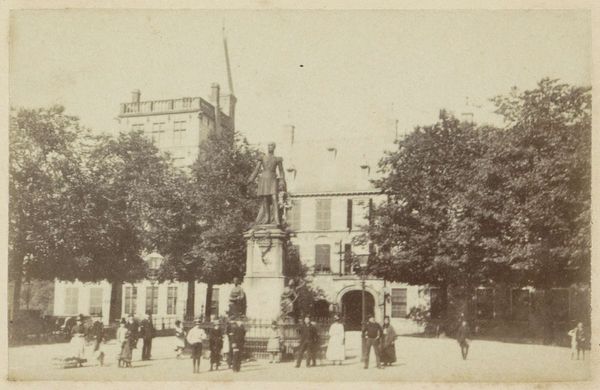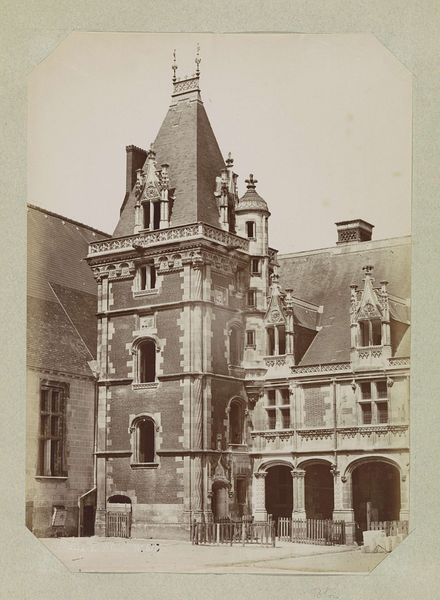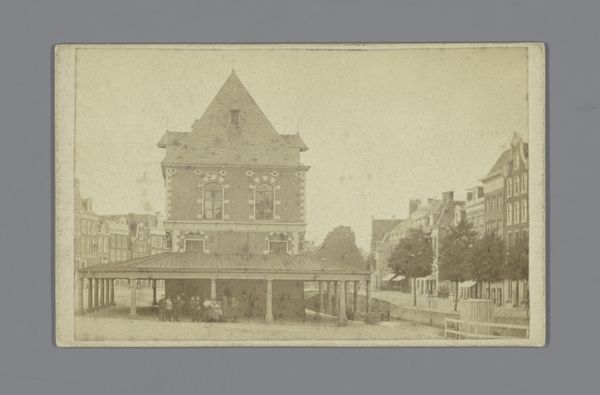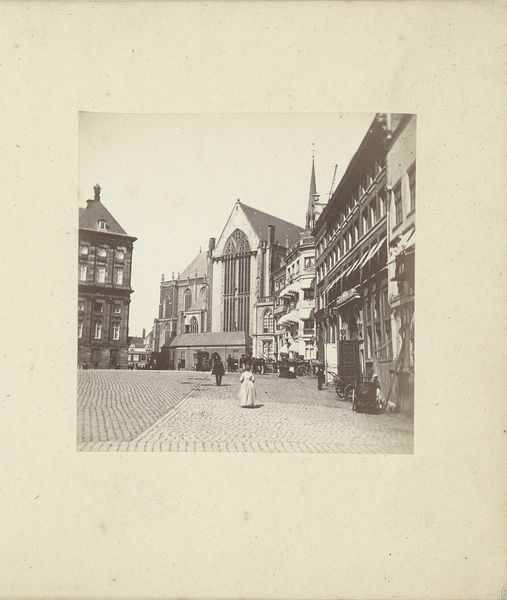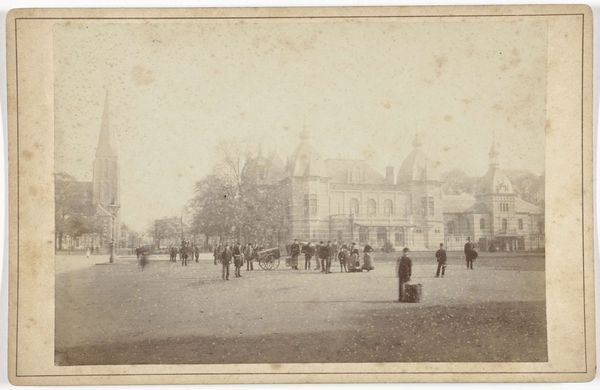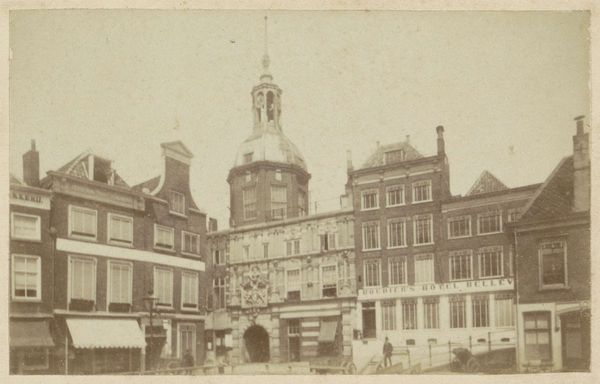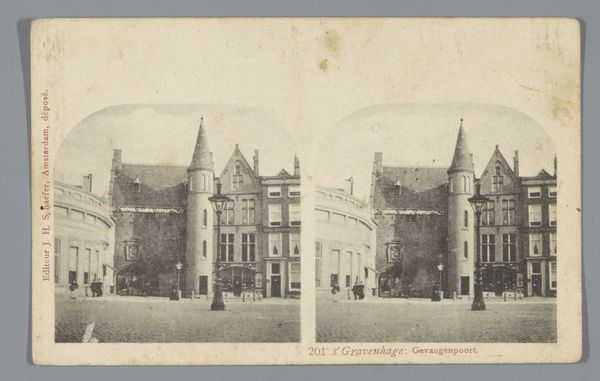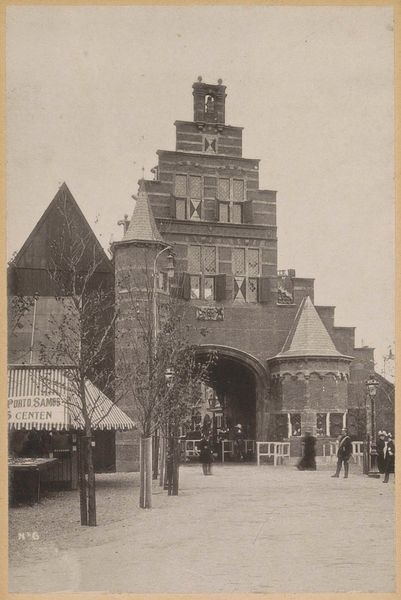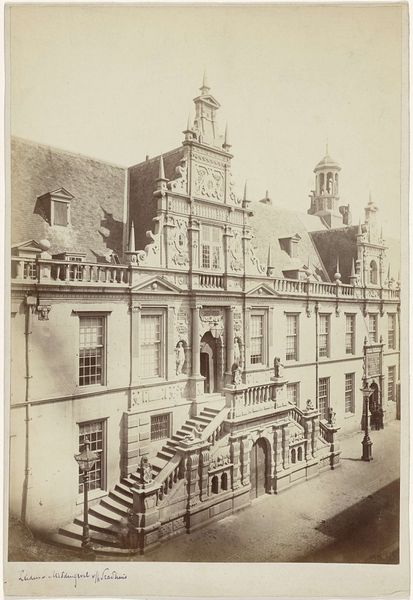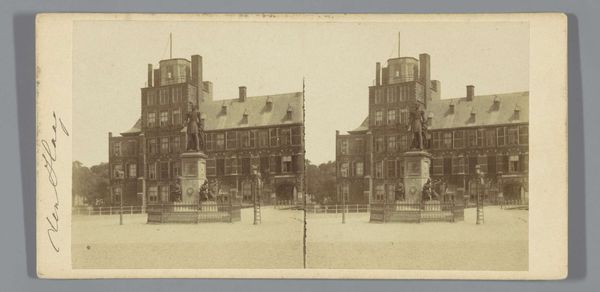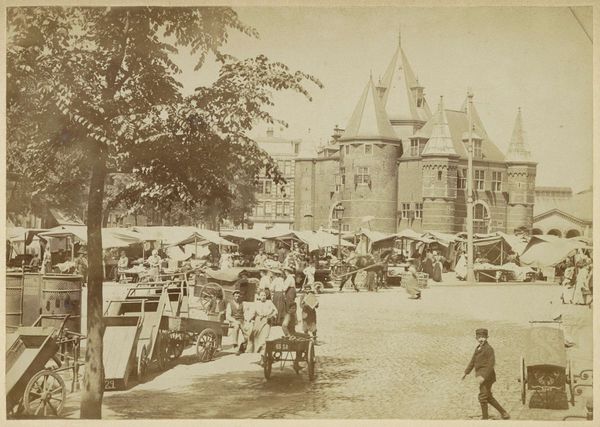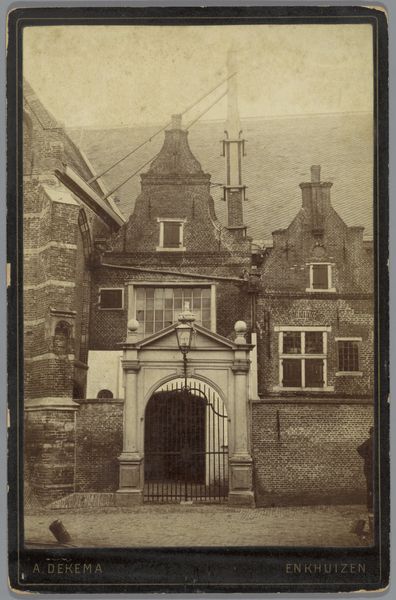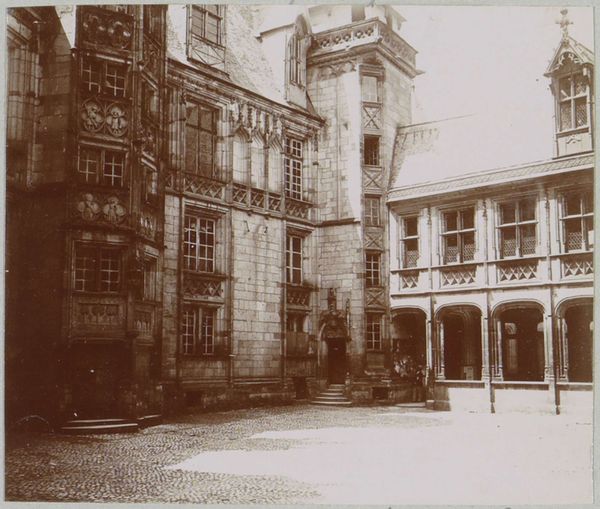
Gezicht op de Gevangenpoort en links Sociëteit de Plaats Royaal in Den Haag c. 1860 - 1900
0:00
0:00
andriesjager
Rijksmuseum
print, photography
#
16_19th-century
#
photo restoration
#
dutch-golden-age
# print
#
photography
#
cityscape
#
realism
Dimensions: height 50 mm, width 80 mm
Copyright: Rijks Museum: Open Domain
Editor: This photograph, “Gezicht op de Gevangenpoort” was taken between 1860 and 1900 by Andries Jager. It presents a street view in The Hague, and its sepia tones lend a nostalgic feel. What’s most striking is the contrast between the imposing gate and the building next door. What do you see in this piece? Curator: I see layers of history etched in the very architecture. Note how the Gevangenpoort, the former prison gate, looms large. It's not just stone; it's a monument to a certain era of justice and power, a time of very public punishment. And beside it, the Sociëteit, a symbol of burgeoning social life, a hub of connection and society. It’s a contrast but it’s a memory – we remember how times change through symbols like this. Editor: So you're saying that the photograph isn't just about buildings, but also about societal evolution? Curator: Precisely. The photographer consciously or unconsciously frames this contrast and perhaps is even commenting on it. The people bustling in the street too. What do you think they represent? Editor: Perhaps just ordinary citizens? Everyday life going on in the shadows of these symbolic structures. Curator: Perhaps. The city as a stage. Think about the cultural memory associated with each building. Consider what this image might evoke for someone living in The Hague then, versus how we interpret it now, in a more mediated fashion through the passage of time. Does the meaning transform as time continues? Editor: That makes me consider how photographs can simultaneously capture and transform memory. Curator: Indeed. The power of imagery lies in its ability to both preserve and alter how we perceive history. Thanks to these details, these images give an emotive feel when thinking of what this represents, in terms of cultural identity, memory and symbolic representation.
Comments
No comments
Be the first to comment and join the conversation on the ultimate creative platform.
